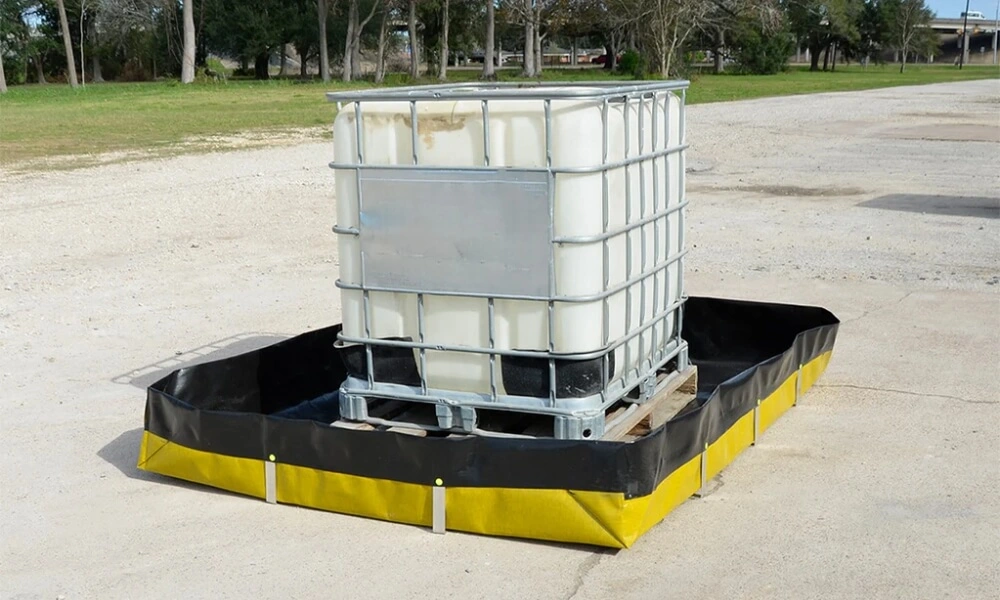Selecting appropriate containment solutions, such as drum bunds, is paramount in handling hazardous liquids. These critical components are designed to prevent spills and leaks from causing environmental damage, posing a health risk, or leading to costly clean-up operations. This article delves into the considerations necessary for choosing the suitable drum bund, aligning with the specific needs of a facility, the nature of the liquids handled, and the inherent risk levels of the operation.
Assessing the Essentials: The Role of Containment Units
Containment units are engineered to provide a secondary line of defence against the accidental spillage or leakage of hazardous materials. By encapsulating the storage containers, these units prevent the spread of contaminants, safeguarding the environment and the health and safety of personnel. The critical first step in choosing an appropriate unit involves a comprehensive understanding of its role within the facility’s operational framework.
Knowing the Facility Requirements
The facility’s physical attributes and operational dynamics are significant in determining the most suitable containment solution. Factors such as available space, typical workflow, and accessibility for emergency response are paramount. For compact spaces, solutions that offer vertical storage capabilities might be preferred, whereas facilities with ample room may opt for more extensive, horizontally oriented units.
Matching Solutions to Liquid Characteristics
The nature of the liquid stored is another critical consideration. Different liquids pose varying degrees of risk based on their flammability, reactivity, and potential environmental impact. For instance, highly flammable liquids require containment units with robust fire-resistant features, while corrosive substances require materials that can withstand their effects. Selecting a unit that aligns with the chemical properties of the stored liquids ensures both safety and compliance with regulatory standards.
Evaluating Risk Factors
Risk assessment forms the backbone of effective containment solution selection. This evaluation should encompass potential scenarios such as container failure, overfill incidents, and natural disasters. High-risk environments necessitate units with enhanced features like spill detection sensors or automatic containment barriers. Understanding the specific risks associated with the facility and the stored substances allows for a targeted approach in choosing the most appropriate containment solution.
Considering Regulatory Compliance and Sustainability
Compliance with local, national, and international regulations is required by law and a moral obligation to assure the safety and well-being of all stakeholders. The chosen containment solution must meet or exceed these standards, which may vary significantly depending on the location and the nature of the stored substances. Additionally, sustainability considerations are increasingly becoming a priority, with many facilities looking for eco-friendly options that reduce environmental impact without compromising safety.
Future-Proofing with Scalable Solutions
Anticipating future needs is essential for long-term operational efficiency and safety. A containment solution that offers modularity or scalability can adapt to changing requirements, whether due to facility expansion, the introduction of new liquids, or evolving regulatory landscapes. Investing in adaptable solutions ensures that safety measures grow with the facility, providing lasting protection and value.
In conclusion, containment solutions such as a drum bund is a multifaceted decision that requires thorough consideration of the facility’s operational requirements, the characteristics of the liquids stored, and the level of risk involved. By prioritising compatibility, capacity, risk assessment, regulatory compliance, and environmental responsibility, facilities can ensure hazardous liquids’ safe and effective containment. As ecological standards evolve and the emphasis on sustainable practices grows, the choice of drum bunds will remain critical to operational safety and environmental protection. The proper containment solutions mitigate risks and reflect a commitment to preserving the environment’s integrity for future generations.





